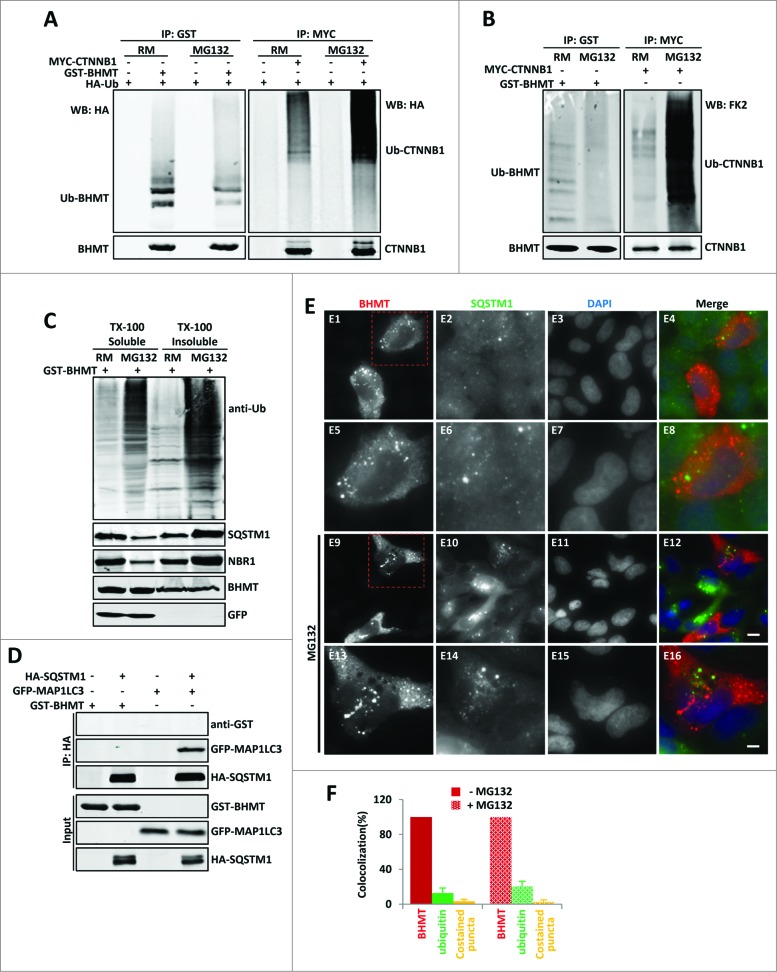Figure 7 (See previous page).
GST-BHMT does not show increased ubiquitination and physical interaction with SQSTM1 in response to proteasome inhibition. (A- C) The ubiquitination patterns of GST-BHMT reporter in response to MG132 treatment. (A and B) HEK293T cells were transfected with pRK5-GST-BHMT reporter (left panels) or the CMV-MYC-CTNNB1 control (right panels), followed by immunoprecipitation with anti-GST or anti-MYC antibodies, as indicated. In (A), cells were cotransfected with CMV-HA-Ub, and the levels of the ubiquitinated GST-BHMT (Ub-BHMT; left panel) or MYC-CTNNB1 (Ub-CTNNB1; right panel) proteins from the cell were detected with anti-HA antibody. In (B), the levels of the ubiquitinated GST-BHMT (Ub-BHMT; left panel) or MYC-CTNNB1 (Ub-CTNNB1; right panel) by endogenous ubiquitin were revealed by FK2 antibody. (C) MG132 does not affect the distribution of GST-BHMT protein in Triton X-100-soluble fractions. The control or MG132-treated HEK293T cells transfected with pRK5-GST-BHMT were harvested into 2 fractions: Triton X-100-soluble (TX-100 soluble) and Triton X-100-insoluble (TX-100 insoluble). The distribution of GST-BHMT, total ubiquitinated proteins, SQSTM1 and NBR1 in both fractions was examined by western blotting using anti-GST, anti-ubiquitin (FK2), anti-SQSTM1 and anti-NBR1 antibodies, respectively, as indicated. The soluble GFP protein, which was hardly detectable in Triton X-100 insoluble fraction, was included as the control for the fractionation procedure. (D) GST-BHMT does not interact with SQSTM1. HEK293T cells were transfected with HA-SQSTM1 together with GST-BHMT or with the positive control GFP-MAP1LC3, followed by immunoprecipitation using anti-HA antibody and western blot detection, as indicated. (E and F) GST-BHMT does not colocalize with SQSTM1. (E) HeLa cells transfected with pRK5-GST-BHMT were immunostained with antibodies against both GST (red) and endogenous SQSTM1 (green) in the absence or presence of MG132, as indicated. Scale bar: 5 µm for E1-E4 and E9-E12; 2 µm for E5-E8 and E13-E16. (F) The quantification of GST-BHMT- and SQSTM1-positive puncta as well as their colocalization profile as described in Materials and Methods.

